✿ George LAMBERT (1873-1930) ✿
George Washington Thomas Lambert (Australia, Russia 1873–1930) was an Australian artist, known principally for portrait paintings and as a war artist during the First World War., a very gifted sculptor and painter, was born in St. Petersburg, Russia, the posthumous son of an American engineer employed on railway construction in Russia. Coming to Australia at the age of fourteen, Lambert worked as a clerk before submitting drawings to the Bulletin, and beginning to paint. After studies at Julian Ashton's Art School, in 1900 Lambert won the first Society of Artists' Travelling Scholarship to study in Paris, and later settled in London. Lambert was appointed official war artist with the A.I.F. in Palestine during World War I, and he returned to Australia permanently in 1921 (to a grand State reception), winning the Archibald Prize in 1927. His talent as a draughtsman is shown in the technical qualities of his works.
Lambert, who was a very keen boxer in his youth, depicts his interest and knowledge of the subject in THE PUGILISTS, 1910. Painted early in his career, this work of simple, firm shapes recurring and repeating, shows Lambert's dependence on the dark colours then current, as well as the influence of the painterly style of Velasquez much emulated in the studios of the day. With its curious allegorical component, typical of the Julian Ashton School, the viewer is led to wonder whether the onlookers are Lambert's wife, two children and family friend Thea Proctor. In this painting of the illuminated faces and hands, in contrast to the dark masses, Lambert has produced a consummate work.
The languid, lyrical style of Lambert's early period is shown in this Australian "Old Master", painted in the sober colours of the Velasquez manner, then in vogue. Lambert depicts his subject in a mannered pose, with elegant neck, long fingers (always a dramatic note in his paintings) and sculptured facial features. The low-key broad masses of deep blacks and lighter greys are lifted by the dramatic contrast of the sitter's long white slim arm, creating a visual liveliness against the dark richness of her garment. The slender dog, whose body is almost parallel to the sitter's arm, complements the graceful figure.
This early work of charm and beauty shows an innovative trend that was always present in his portraiture - namely, that his interest was not in the personality of the sitter, but in the aspects of formal decorative qualities.This work is recorded as a study for PORTRAIT OF THEA PROCTOR, 1905, in the possession of the Queensland Art Gallery.
Iscriviti a:
Commenti sul post (Atom)

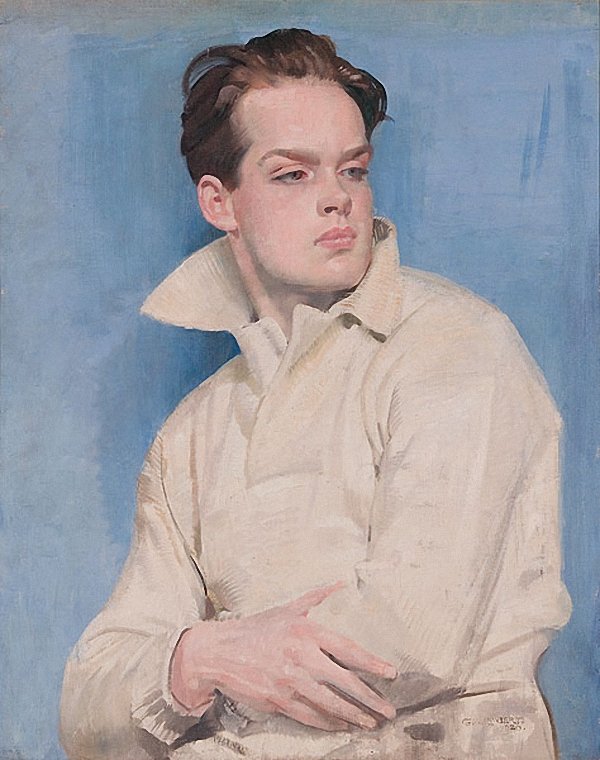
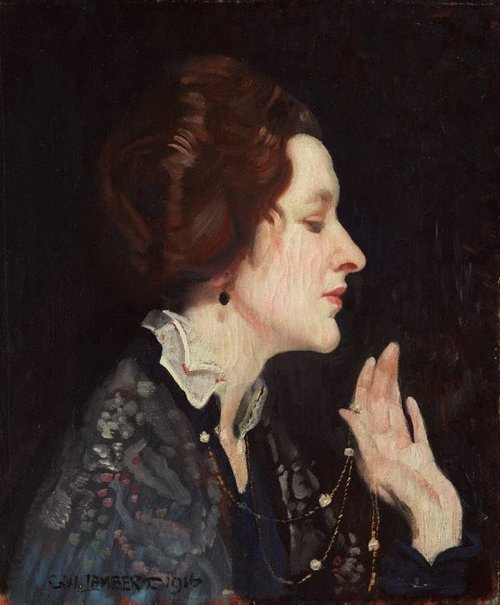















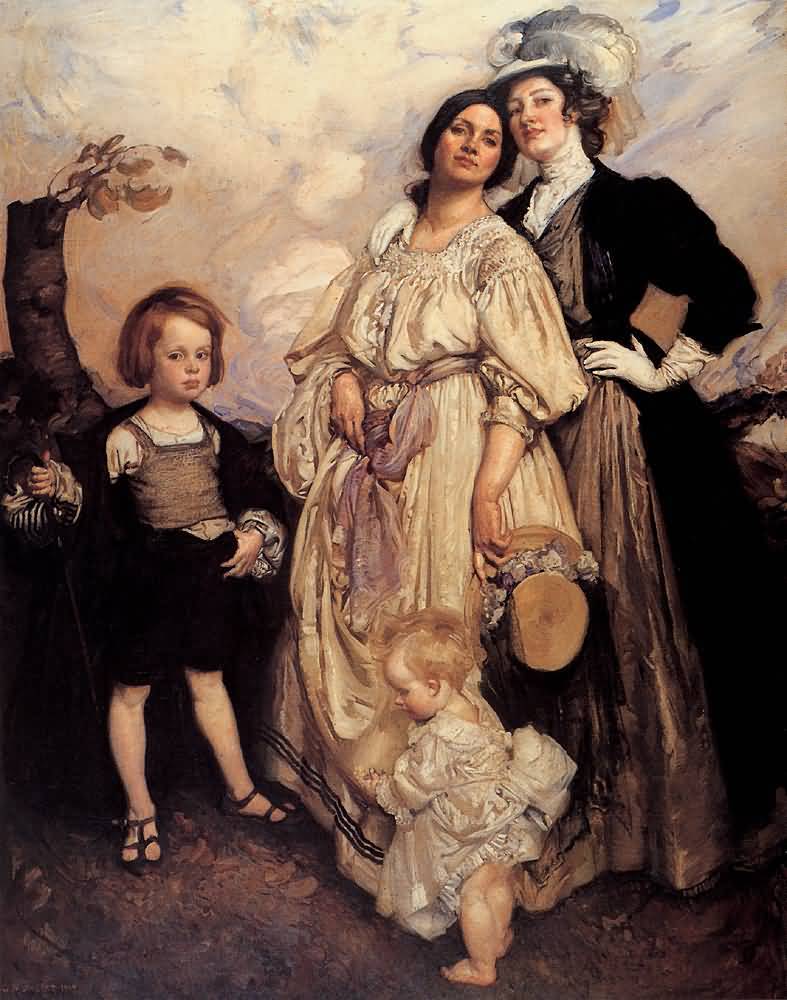
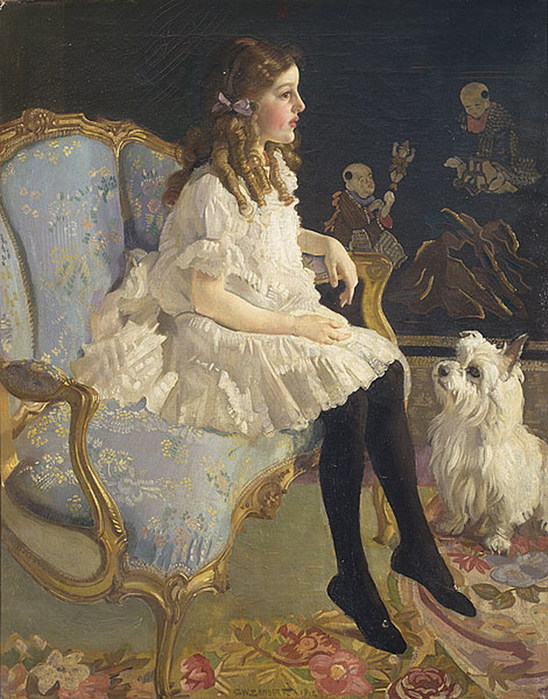

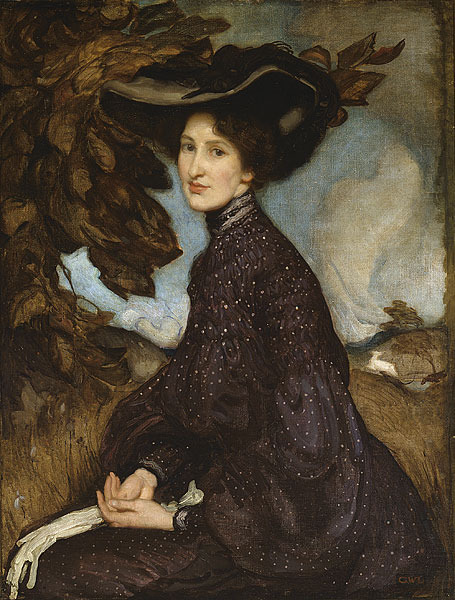

















Nessun commento:
Posta un commento
Info sulla Privacy